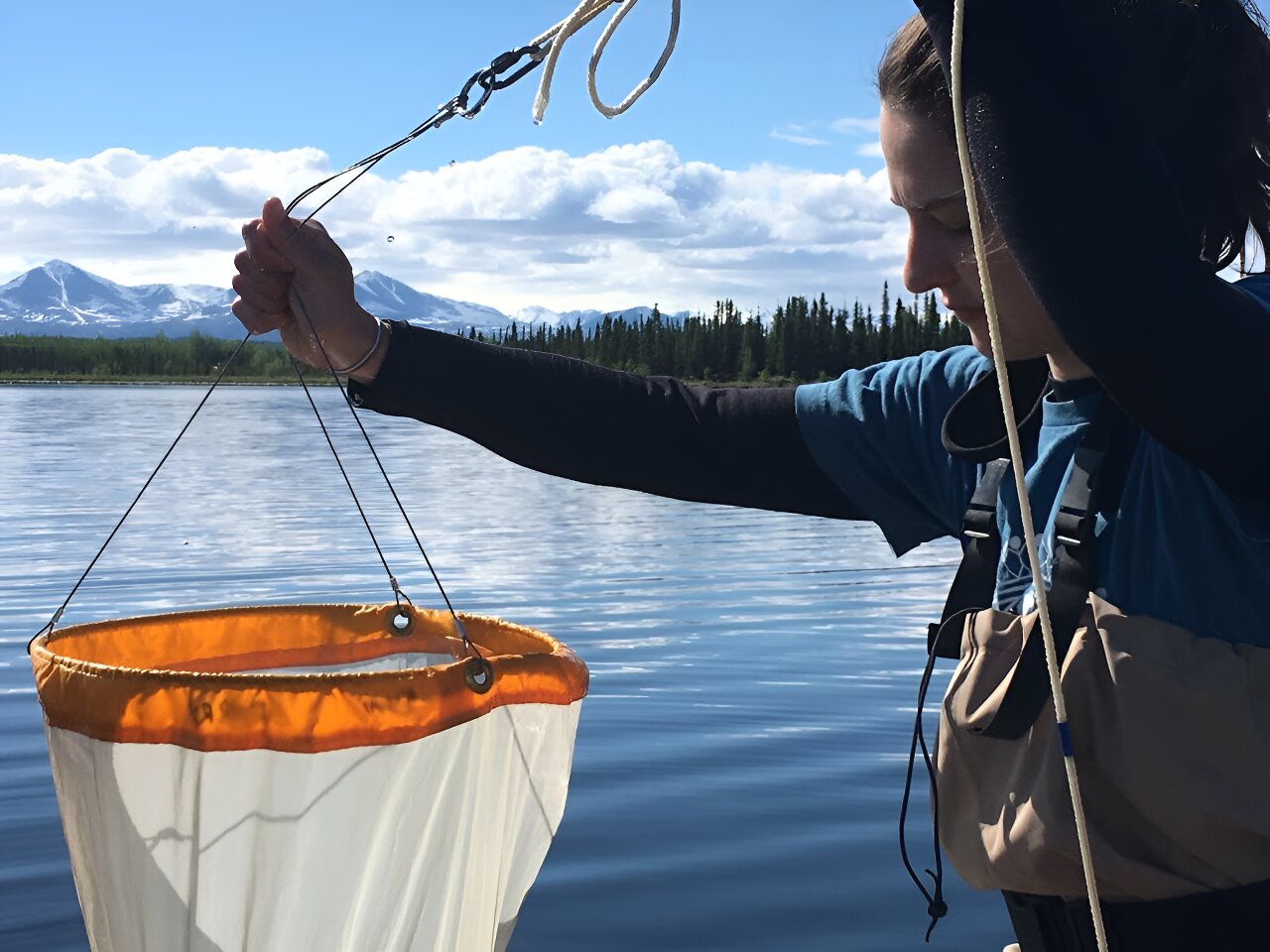by Alison Derry, Annabelle Fortin-Archambault and Beatrix Beisner, The Conversation
Freshwater ecosystems are impacted by human activities, including climate change, pollution and invasive species.
We are researchers at the Université du Québec à Montréal and part of the Groupe de recherche interuniversitaire en limnologie, a network of researchers across Québec who study lake ecosystems. We focus much of our research on zooplankton as they are such central food web players.
Zooplankton are a diverse group of microscopic animals that live in lakes, some large rivers and oceans. They are an essential central link in freshwater food webs and can act as first indicators of any impacts on entire lake ecosystems.
Dormant eggs
Zooplankton consist of several different groups, of which copepods and cladocerans are the two most studied. As crustaceans, both groups are covered in a hard exoskeleton or carapace made of chitin. Copepods have elongated bodies and can be herbivorous, omnivorous or carnivorous. They have complex life cycles and reproduce sexually.
In contrast, cladocerans are generally more rounded, with bivalve carapaces and are more often herbivorous. They can reproduce both sexually and asexually, and have life cycles that range from days to weeks.
Both copepods and cladocerans can produce dormant eggs—eggs that do not hatch right away—when the environmental conditions are unfavorable, usually in the fall. These eggs hatch later, when environmental conditions are suitable, such as in the spring.
However, many dormant eggs, rather than hatching, are instead buried in lake sediments each year, creating a historical record that can then be used to study how zooplankton populations potentially adapt to human and otherdisturbances in lakes.
An important food source
Zooplankton can affect lake ecosystems in several ways. In part, this is because of their intermediate food web position between phytoplankton (microscopic algae), which primarily harness energy from the sun to produce food, and predators that depend on zooplankton as prey.
By feeding on phytoplankton, zooplankton help control algal abundance in lakes, thereby mediating blooms. Algal blooms are of concern because they are sometimes harmful because they can release toxins, cause dramatic increases in pH and create oxygen-poor zones in lakes when they decompose.
Zooplankton are also an important food source for many organisms, including fish, insect larvae and aquatic birds. They transfer energy and resources up the food chain, playing an important role in nutrient cycles essential for primary production, which is the transformation of carbon dioxide into organic compounds.

Human impacts
The severity and nature of the impacts of multiple stressors on lakes will differ depending on the type of threat that a zooplankton community faces. It will also depend on other factors such as the lake’s ecological history, geology and local environmental conditions.
Ongoing research into these stressors, and how zooplankton respond to them, is essential for our ability to understand, predict and mitigate their impacts on freshwater ecosystems.
Pollution has been a major threat to freshwater ecosystems since the beginning of the industrial era. Lakes can be polluted by many different types of contaminants, including pesticides, salt, microplastics and metals. These pollutants come from many different sources, such as agricultural practices, mining and industry and urban waste.
Different contaminants can have different effects on zooplankton. Salinization is a global issue, and occurs as a result of agriculture, mining and intrusion from increased sea levels. In colder climates, salinization is mainly caused by road salts leaching into lakes and rivers during snow melt.
Lake salinization reduces zooplankton abundance and diversity, impairing their functional roles in controlling algal abundance and as a food resource for their predators. This, in turn, reduces the energy and resource transfer by zooplankton, thereby leading to knock-on effects.
Another long-standing threat to freshwater zooplankton is eutrophication—an over-supply of nutrients essential to primary production, primarily phosphorus and nitrogen. In eutrophic lakes, zooplankton communities often shift towards smaller-bodied species that are less rich in phosphorus than larger species that tend to dominate temperate lakes.
This reduces the regulatory role of zooplankton, making them less efficient in controlling algal blooms, which are also strongly favored by the nutrient additions associated with eutrophication.
The impacts of climate change
Climate warming will also cause a shift towards smaller-bodied and faster-growing zooplankton through both direct effects on metabolic rates and through increased predation by fish, who prefer feeding on larger zooplankton, further decreasing their abundances in lakes.
Because larger zooplankton are more efficient grazers of phytoplankton (algae) and given their role as fish prey, this shift reduces the efficiency of zooplankton in food web transfers in lakes.
Climate warming often accompanies other stressors, interacting with them in different ways. For example, warming enhances eutrophication effects, but has no impact on the effects of salinization on zooplankton.
The study of freshwater zooplankton and the effects that human actions have on their communities is essential to our understanding of lake functioning in our changing world. Zooplankton research is essential for the effective management of freshwaters because it helps us mitigate, restore or work with the impacts to lakes caused by human activity.
This article is republished from The Conversation under a Creative Commons license. Read the original article.![]()
Citation:
Understanding how human activity impacts zooplankton is essential for managing and protecting lakewater (2024, August 31)
retrieved 31 August 2024
from https://phys.org/news/2024-08-human-impacts-zooplankton-essential-lakewater.html
This document is subject to copyright. Apart from any fair dealing for the purpose of private study or research, no
part may be reproduced without the written permission. The content is provided for information purposes only.

